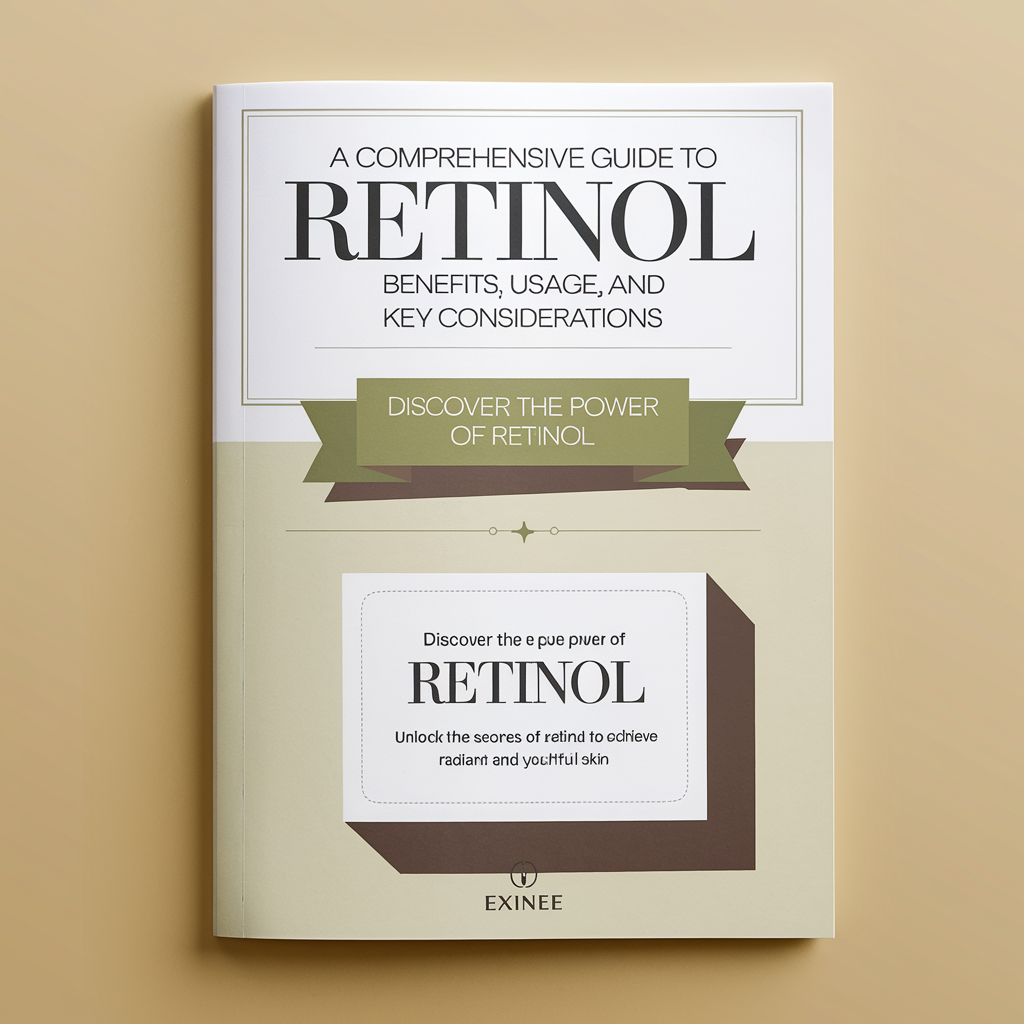Retinol has become one of the most talked-about skincare ingredients, known for its anti-aging and skin-renewing properties. However, with various strengths, formulations, and usage guidelines, it can be confusing to determine the best way to incorporate it into your routine. This article provides an in-depth look at retinol, including its benefits, how different percentages impact effectiveness, considerations for different age groups and regions, and best practices for safe and effective use.
What is Retinol?
Retinol is a derivative of Vitamin A, widely used in skincare for its ability to promote cell turnover, boost collagen production, and improve skin texture. It is part of the larger family of retinoids, which range from over-the-counter (OTC) formulas to prescription-strength treatments.
Retinol works by penetrating the skin and accelerating cell regeneration, which helps reduce fine lines, wrinkles, and hyperpigmentation. Unlike other skincare ingredients, retinol provides long-term benefits when used consistently, making it a staple in anti-aging and acne-fighting routines.
How Retinol Works on the Skin
- Increases Collagen Production: Helps reduce fine lines and wrinkles.
- Speeds Up Cell Turnover: Fades dark spots and improves overall skin tone.
- Unclogs Pores: Prevents breakouts and minimizes acne scars.
- Enhances Skin Texture: Reduces rough patches and improves smoothness.
Key Considerations Before Using Retinol
While retinol has significant benefits, it requires careful usage to avoid irritation, dryness, or adverse reactions. Here are the most important factors to consider before adding it to your skincare routine.
1. Skin Type and Sensitivity
Not all skin types react the same way to retinol. Individuals with dry or sensitive skin may experience redness, peeling, and irritation. Those with oily or acne-prone skin can generally tolerate higher percentages.
Tip: Start with a lower concentration (0.1% to 0.3%) if you have sensitive skin.
2. Strength and Percentage Differences
Retinol comes in different strengths, and choosing the right one depends on your skin’s tolerance and specific skincare goals.
| Retinol Percentage | Best For | Effects & Considerations |
|---|---|---|
| 0.1% – 0.3% | Beginners, Sensitive Skin | Mild anti-aging effects, minimal irritation |
| 0.5% – 1% | Moderate Users | Improves texture, reduces fine lines |
| 1% – 2% | Experienced Users | Strong anti-aging, potential peeling |
Using a high percentage too soon can lead to irritation. It is best to introduce retinol gradually into your routine.
3. Age and Gender Considerations
- Teens & Young Adults (Below 25): Retinol is usually not necessary unless treating acne. A lower concentration (0.1%-0.3%) is recommended.
- Adults (25-40): Best time to start using retinol for preventative aging. Mid-range percentages (0.5%-1%) work well.
- Mature Skin (40+): Higher strengths (1% or above) can be beneficial for deep wrinkles and skin renewal.
- Men vs. Women: Retinol works similarly on both genders, but men may require stronger formulations due to thicker skin.
4. Regional and Climate Impact
Your environment can influence how retinol interacts with your skin.
- Hot & Humid Climates: Increased sun exposure can heighten skin sensitivity; use sunscreen diligently.
- Cold & Dry Climates: Retinol may cause extra dryness—pair with a hydrating moisturizer.
- High Pollution Areas: Retinol helps counteract environmental damage but should be used alongside antioxidants like Vitamin C.
Best Ways to Use Retinol for Maximum Effectiveness
Using retinol correctly ensures optimal results with minimal irritation. Here’s a step-by-step guide to incorporating it into your routine.
1. Start Slowly
- Apply twice a week initially to allow your skin to adjust.
- Gradually increase usage to every other night or daily, depending on tolerance.
2. Apply on Clean, Dry Skin
- Wash your face with a gentle cleanser.
- Pat your skin dry completely before applying retinol. Damp skin increases absorption and may cause irritation.
3. Use a Pea-Sized Amount
- Less is more! A small amount is enough for the entire face.
- Apply a thin layer, avoiding the eyes and lips.
4. Follow with a Moisturizer
- Retinol can be drying, so applying a hydrating, fragrance-free moisturizer helps prevent irritation.
5. Always Use Sunscreen
- Retinol makes skin more sensitive to UV rays. Apply broad-spectrum SPF 30+ every morning.
6. Avoid Mixing with Certain Ingredients
Some skincare ingredients do not mix well with retinol:
| Do Not Mix With | Why? |
|---|---|
| AHAs/BHAs (Glycolic, Salicylic Acid) | Increases irritation and peeling |
| Benzoyl Peroxide | Deactivates retinol’s effectiveness |
| Vitamin C (AM Use is Fine) | Can cause excessive dryness and irritation |
If you want to incorporate other active ingredients, alternate their use (e.g., Vitamin C in the morning, retinol at night).
Checking Ingredients: Chemical Considerations
Before purchasing a retinol product, check the ingredients list. Some formulations include stabilizers or additional components that impact efficacy.
Key Ingredients to Look For
- Encapsulated Retinol: Delivers retinol gradually to minimize irritation.
- Hyaluronic Acid: Provides hydration and counteracts dryness.
- Niacinamide: Reduces redness and strengthens the skin barrier.
- Peptides: Boost collagen production alongside retinol.
Ingredients to Avoid
- Fragrances & Essential Oils: Can trigger sensitivity.
- Alcohol (Denatured Alcohol): Causes excessive dryness.
- Synthetic Dyes & Parabens: Potential skin irritants.
Retinol for Kids and Adolescents: Is It Safe?
Retinol is generally not recommended for children unless prescribed by a dermatologist for severe acne. For teenagers, lower concentrations (0.1%-0.3%) can be used under professional guidance.
Conclusion
Retinol is a powerful skincare ingredient with remarkable benefits for anti-aging, acne, and overall skin health. However, using it correctly is crucial to avoid irritation and maximize effectiveness. Choosing the right percentage, considering age and skin type, and pairing it with the right skincare ingredients can make all the difference. Always start slow, use a moisturizer, and never skip sunscreen when incorporating retinol into your routine.
By understanding how to use retinol effectively, you can achieve smoother, healthier, and more youthful-looking skin in the long run.
Frequently Asked Questions (FAQs)
1. How long does it take for retinol to show results?
Results typically appear within 4-6 weeks, but for deeper wrinkles and pigmentation, 3-6 months of consistent use is needed.
2. Can I use retinol every day?
Yes, but only after your skin builds tolerance. Start 2-3 times per week and gradually increase to nightly use.
3. Can pregnant women use retinol?
No, retinol is not safe during pregnancy or breastfeeding. Consider alternatives like bakuchiol.
4. Does retinol thin the skin?
No, retinol thickens the skin over time by stimulating collagen production, though it may cause temporary peeling.
5. What is the best time to apply retinol?
Retinol should be applied at night because it increases sun sensitivity. Always follow with sunscreen in the morning.

